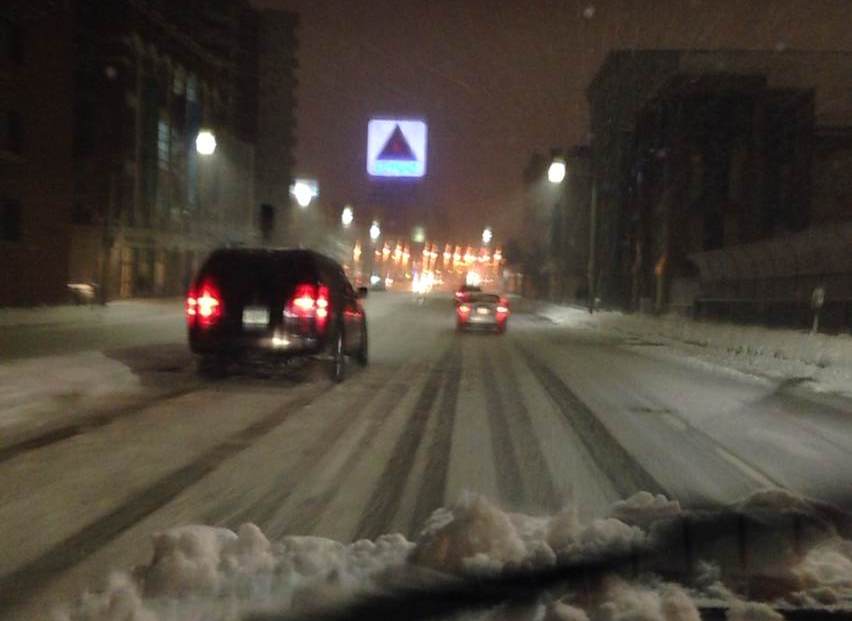By David Li, bostonese.com
Boston, Feb. 16, 2014, — We had two snowstorms on last three days in the greater Boston area. Luckily, the Friday evening’s BCTC Winter Doubles tennis league at Woburn Racquet Club was not interrupted. My partner arrived a little bit late as she had a minor accident driving her car out of the office complex. “There was a slope, and my car just slipped and hit another car. We exchanged papers and took pictures of the cars.”

Yet another snowstorm in Boston on Feb. 15, 2014.
|
|
Arrived in Boston during a blizzard in Jan. 1996, I have had my share of winter driving adventures. I learned from a friend from Montreal that winter tiers were required by law over there a few years ago. I started to use winter tiers three years ago, and it has brought me much needed peace of mind driving my front-wheel-drive compact car during wintertime in Boston, and you can also be confident driving in the winter following the following five tips. Of course, you should always try to stay off the roadways whenever there is a winter storm warning.
1. Change to four winter tiers starting in December.
I put the winter tiers on when I get my car services. It costs about $80 to mount and balance the tiers. It will cost you another $80 to change back to regular tiers in March or April. This is a better investment than purchasing 4-wheel-drive vehicles for safe winter driving. Snow tiers are designed to keep your car on track in winter conditions.
2. Drive in lower gears whenever there is snow or ice on the ground.
Many of my friends do not know that there are lower gears even with automatic transmission. Most automatic transmissions does have lower gears (such as 3, 2 and L) other than the default gear D. I would drive gear 3 when there is snow and ice on the road, and 2 or L gear when the car goes uphill or downhill. With lower transmission ratio of lower gears, there is more power being transferred from the engine to the driving wheels than the normal gear D. So, you must be careful with acceleration, and step on the gas pedal gently when there is snow and ice on the ground.
3. Keep enough distance from cars in front and behind of your car.
With snow, ice and sand on the roadways, it takes longer distance for a moving car to come to a stop. So, you should double the usual distance between your car and other cars in winter time.
4. Reduce your speed.
In winter conditions, it’s very important to drive at reduced speed on highways or on local streets. The exit ramps on local highways typically have a 30 MPH speed limit. But, this is way too high if there is snow and ice on the exit ramp. Slow down, and drive at 15 MPH or slower when you exit from highways if it snows. It’s also a good idea to driver 10 MPH below the posted speed limits or even slower on highways if you have to drive during snowstorms.
5. Keep your car well-maintained.
With sub-zero temperatures, you are putting a lot of stress on your car each morning when you turn the start key. Have your battery and starter checked at start of the winter. There is no fun when you have to wait for a tow truck in a parking lot when your car fails to start.
Make sure you have good windshield wipers and fill up windshield wash fluid before winter starts. It can be very dangerous if you don’t have good visibility during a snowstorm. If your windshield wipers cannot do the job, find a safe place to stop, and clean up the snow and ice on the windshield and side windows.
You can check out more winter driving tips at AAA’s website: exchange.aaa.com/safety/roadway-safety/winter-driving-tips.
|
|